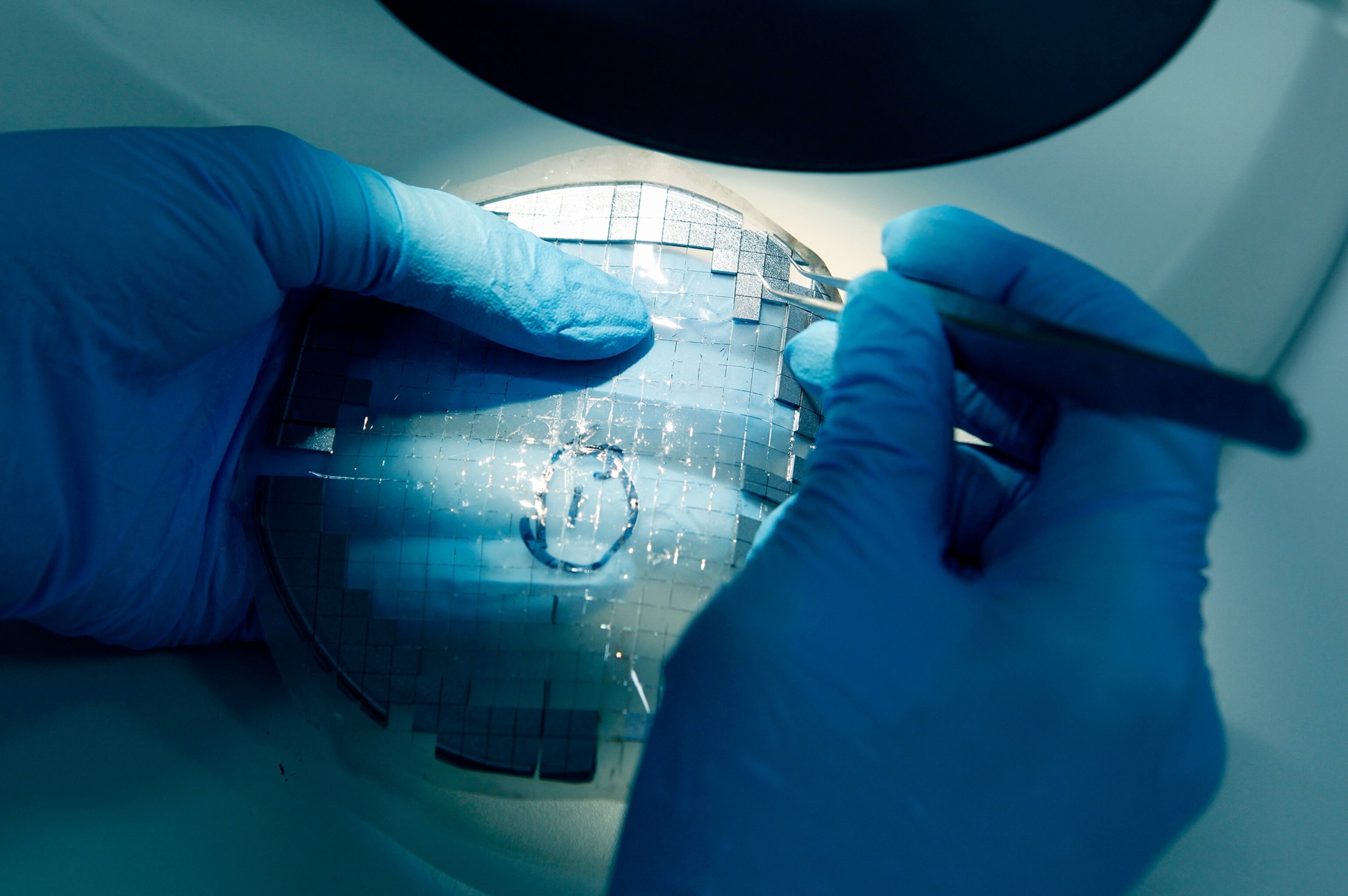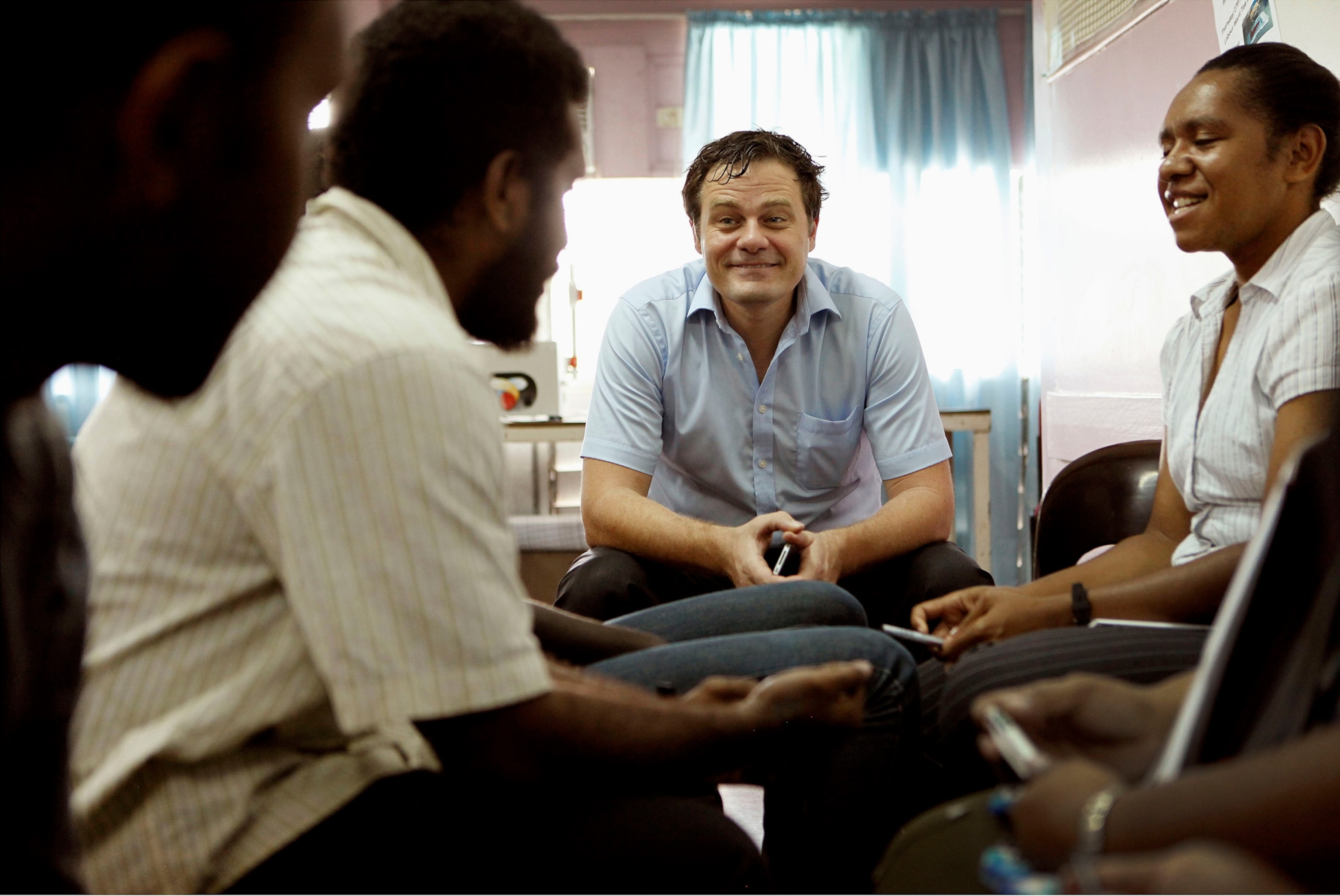Fear of Needles? There's New Tech on the Way
Biomedical engineer Mark Kendall's innovative Nanopatch could revolutionize medical vaccinations.
The hypodermic syringe needle has been striking fear in patients since the 1850s. But it could be relegated to the history books within a decade by a revolutionary medical device that promises to deliver far more than pain-free medicine.
Biomedical engineer Mark Kendall's needle-free Nanopatch is tinier than a postage stamp but huge on potential impact. Its portability could help lower global mortality rates from tuberculosis, malaria, HPV, and other infectious diseases—which account for millions of deaths every year—and help to eradicate others, such as polio.

Unlike many vaccines that require cold-chain protection to maintain efficacy from factory to storage, the Nanopatch needs no refrigeration—it's embedded with thousands of tiny spikes that are dry coated with vaccine. That's a boon in undeveloped regions lacking the electricity to keep medications cold.
Moreover, the Nanopatch, which attaches to the skin by a spring-loaded device, pushes medications into multiple cells just below the skin, a more effective immune response than needle syringes, which inject drugs into muscle, Kendall says. It's also safer than hypodermic needles, which injure scores of patients and expose health-care workers to disease.
“Old technology may be hard to beat, but we think we have something that can finally beat old technology,” says Kendall, 44, a Rolex Laureate.
He came up with the Nanopatch in 2004, while he was a researcher at Oxford University. He's already checked out the potential use in Papua New Guinea, which has one of the world’s highest rates of HPV-related cervical cancer but little access to preventative medications.
“It’s a great place [for a] test case—a country the size of France that has only 800 refrigerators, many not working or … in areas that aren’t accessible to a lot of people,’’ says Kendall, who’s now a professor at Australia's University of Queensland.
Vaxxas, the biotech company Kendall founded, drew millions in investment capital. The company has potential deals with pharmaceutical giants such as Merck and has drawn interest from the World Health Organization, which will conduct an injectable polio vaccine study in 2017.

Earlier this year, Vaxxas, along with Kendall's research team at the University of Queensland's Australian Institute for Bioengineering and Nanotechnology and the WHO, tested an inactivated poliovirus vaccine in lab rats. The tests found the Nanopatch effective using 1/40th of the usual poliovirus vaccine dosage, Kendall says.
Clearly, getting new pharmaceuticals and delivery systems to market takes years of additional research and capital. Vaxxas CEO David Hoey says the company is seeking U.S. market approval first. Initial tests were required on a vaccine-free Nanopatch just to determine if the delivery system was safe to humans.
Broader, multiphase clinical studies required for U.S. market approval could take five to seven years, Hoey says.
Kendall says he realized that his invention, which started out as a doodle on a notepad, would take at least a decade to bring to market.
“The prospect of making something that could make a difference to millions of people is a wonderful feeling—there's nothing else I'd rather be doing,’’ he says. "But I'm not going to be satisfied until we get this out of the lab and get it where it's needed the most."





